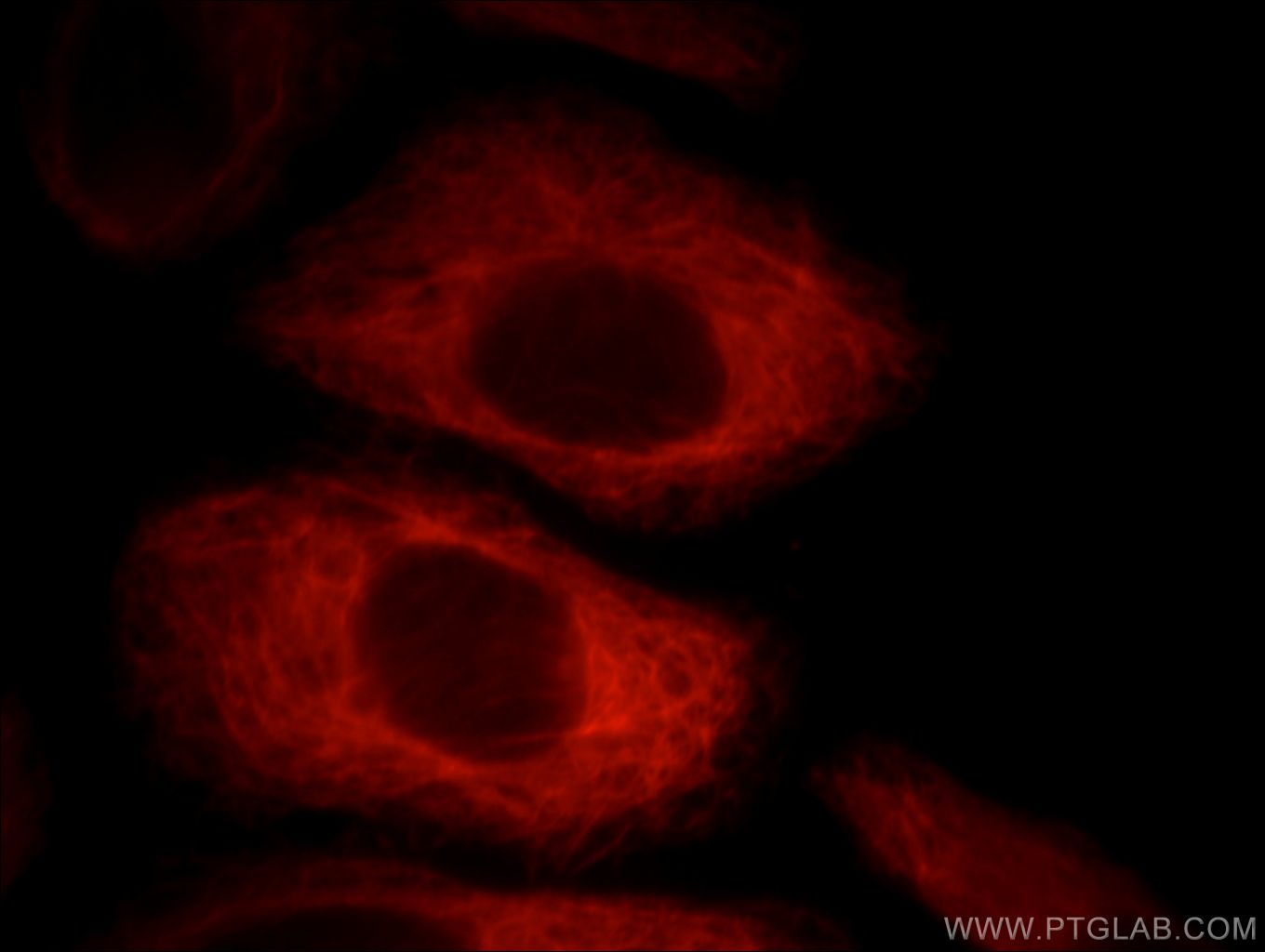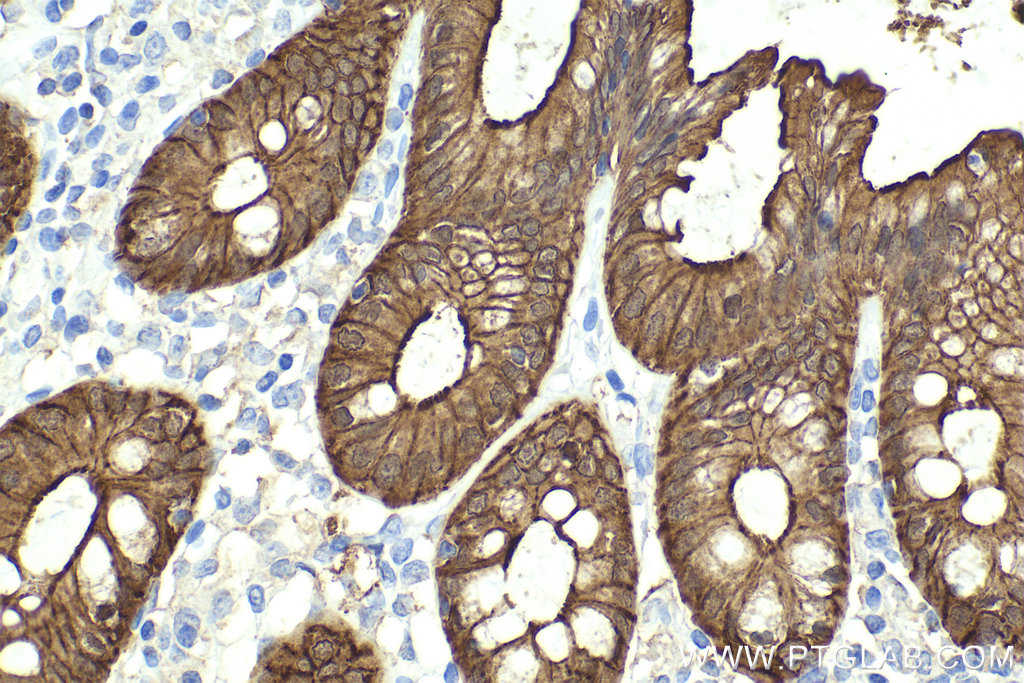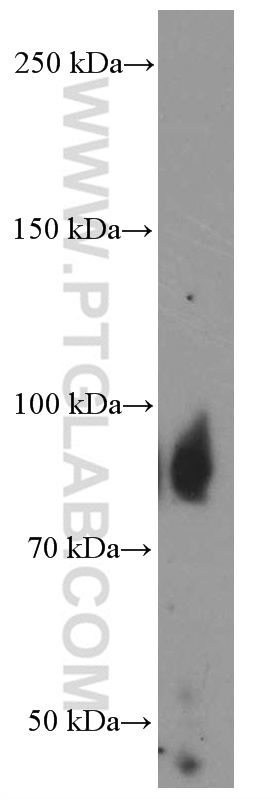验证数据展示
经过测试的应用
| Positive WB detected in | Human kidney, tissue |
| Positive IP detected in | mouse kidney tissue |
| Positive IHC detected in | human colon tissue Note: suggested antigen retrieval with TE buffer pH 9.0; (*) Alternatively, antigen retrieval may be performed with citrate buffer pH 6.0 |
| Positive IF/ICC detected in | HepG2 cells |
推荐稀释比
| 应用 | 推荐稀释比 |
|---|---|
| Western Blot (WB) | WB : 1:500-1:2000 |
| Immunoprecipitation (IP) | IP : 0.5-4.0 ug for 1.0-3.0 mg of total protein lysate |
| Immunohistochemistry (IHC) | IHC : 1:2500-1:10000 |
| Immunofluorescence (IF)/ICC | IF/ICC : 1:10-1:100 |
| It is recommended that this reagent should be titrated in each testing system to obtain optimal results. | |
| Sample-dependent, Check data in validation data gallery. | |
产品信息
66096-1-Ig targets Villin in WB, IHC, IF/ICC, IP, ELISA applications and shows reactivity with human, mouse samples.
| 经测试应用 | WB, IHC, IF/ICC, IP, ELISA Application Description |
| 文献引用应用 | WB, IHC, IF |
| 经测试反应性 | human, mouse |
| 文献引用反应性 | human, mouse |
| 免疫原 | Villin fusion protein Ag9637 种属同源性预测 |
| 宿主/亚型 | Mouse / IgG1 |
| 抗体类别 | Monoclonal |
| 产品类型 | Antibody |
| 全称 | villin 1 |
| 别名 | VIL1, villin 1, VIL, D2S1471, 2B7B9 |
| 计算分子量 | 827aa,93 kDa; 826aa,93 kDa |
| 观测分子量 | 93-95 kDa |
| GenBank蛋白编号 | BC017303 |
| 基因名称 | Villin |
| Gene ID (NCBI) | 7429 |
| RRID | AB_2881495 |
| 偶联类型 | Unconjugated |
| 形式 | Liquid |
| 纯化方式 | Protein A purification |
| UNIPROT ID | P09327 |
| 储存缓冲液 | PBS with 0.02% sodium azide and 50% glycerol pH 7.3. |
| 储存条件 | Store at -20°C. Stable for one year after shipment. Aliquoting is unnecessary for -20oC storage. |
背景介绍
Villin 1 (VIL1) is a 95-kDa F-actin bundling and severing protein and its expression is restricted to epithelial cells with a brush border, like epithelial cells of the intestinal mucosa, gall bladder, renal proximal tubules and ductuli efferentes of the testis. VIL1 has been reported to be an epithelial cell-specific anti-apoptotic protein, and to have an important function in regulating actin dynamics, cell morphology, epithelial-to-mesenchymal transitions, cell migration and cell survival. In addition, VIL1 is a useful diagnostic marker for of various cancer, like cervical and endometrial adenocarcinomas, renal cell carcinoma. VIL1 was recently identified as a novel biomarker predictive for postoperative recurrence and poorer prognosis of high serum AFP associated HCC.
实验方案
| Product Specific Protocols | |
|---|---|
| WB protocol for Villin antibody 66096-1-Ig | Download protocol |
| IHC protocol for Villin antibody 66096-1-Ig | Download protocol |
| IF protocol for Villin antibody 66096-1-Ig | Download protocol |
| IP protocol for Villin antibody 66096-1-Ig | Download protocol |
| Standard Protocols | |
|---|---|
| Click here to view our Standard Protocols |
发表文章
| Species | Application | Title |
|---|---|---|
Gastroenterology Stiffness Restricts the Stemness of the Intestinal Stem Cells and Skews Their Differentiation Towards Goblet Cells | ||
Theranostics The Circadian Clock Gene Bmal1 Controls Intestinal Exporter MRP2 and Drug Disposition. | ||
Oxid Med Cell Longev Sitagliptin Alleviates Radiation-Induced Intestinal Injury by Activating NRF2-Antioxidant Axis, Mitigating NLRP3 Inf--lammasome Activation, and Reversing Gut Microbiota Disorder. | ||
Inflamm Bowel Dis Excessive Mitochondrial Fission Suppresses Mucosal Repair by Impairing Butyrate Metabolism in Colonocytes | ||
J Pharmacol Sci Syntaxin 3 interacts with serotonin transporter and regulates its function. | ||
Int J Clin Exp Pathol A four actin-binding protein signature model for poor prognosis of patients with esophageal squamous cell carcinoma. |






